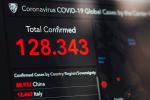Comparing figures on corona infections and mortality can be misleading
The number of people dying of Coronavirus (COVID-19) in Belgium is higher than in its neighbouring countries. That high death rate makes it seem as if Belgium is not doing as well as its neighbours. De Volkskrant even headlined on 17 April that Belgium is the European leader in terms of the number of deaths. In the Netherlands, on the other hand, CBS earlier reported that the actual number of deaths in a week is up to two times higher than officially reported. The figures from Germany are also surprising to many experts. It is a mystery until today why mortality rates are so low in Germany. How can it be that the differences between these three countries are so large? To find out, we need to take a closer look at statistics and how corona infections are reported.
Recorded number of corona deaths as of 24 April*
| Germany | Netherlands | Belgium |
| 5.321 | 4.289 | 6 490 |
*: using different measurement systems Sources: (Robert-Koch-Institut, RKI.de), RIVM.nl and Sciensano.be
Belgium: suspicion of infection also counts
When you consider that Germany has almost eight times the population of Belgium and five times that of the Netherlands, the difference with Germany is very large. For Belgium, the reported deaths in hospital were all persons with Coronavirus infection. Of the reported deaths in residential care centres, however, it cannot be said with certainty that they were infected. For the vast majority (92%) of these deaths in residential care centres, it is only a suspicion of infection. Only a fraction of these deaths were actually diagnosed with corona (8%).
So it may be clear that it cannot be said with certainty that all reported deaths are also due to Coronavirus infection, let alone that all deceased persons were actually infected. In Belgium, meanwhile, there has been some political grumbling, as the high number of figures would put Belgium in a bad light internationally, while others believe that in this way Belgium stands out as the country that holds nothing back and reports best and most thoroughly.
Netherlands only counts infected cases
The Dutch National Institute for Public Health and the Environment (RIVM) also releases up-to-date figures on Corona virus every day, more specifically the number of positives tested, hospital admissions and deaths. To be fair, RIVM already notes that the figures only include cases that tested positive for Corona. The official figures therefore only include deaths in hospitals where there is certainty that there was infection. CBS figures of so-called ‘excess mortality’ (the difference between deaths during Coronavirus and what is ‘normal’) show that there are large numbers of ‘invisible’ corona deaths, especially in institutional households (nursing homes, asylum seekers’ centres, etc). It is for this reason that on Easter Monday, the Consortium of Family Medicine called on Dutch GPs to report the hidden corona cases by also reporting those deaths where Corona is strongly suspected. The RIVM is positive and the first results are expected next week.
In Germany, many more tests
The Robert-Koch-Institute (RKI) uses only official cases reported to health authorities in accordance with the German Infection Protection Act (IfSG). But unlike in the Netherlands, testing is also common in care centres. One explanation for why the ratio of infected people to deaths is more favourable in Germany is clear: because in Germany many more people are also tested with mild symptoms than in the Netherlands and Belgium, the group with severe consequences is smaller. It was also suspected that the age of infected people in Germany was lower than in other countries. According to various sources (RKI, media), the situation was better than in neighbouring countries in terms of testing from an early stage. Many people test and isolate, which is also one of the reasons cited by the director of the Rober-Koch-Institut Lothar Wieler for the relatively low mortality rates (Kölner Stadtanzeiger, 31.3.2020).
Hard to make a comparison
Thus, despite the large differences (especially in comparison with Germany), it clearly emerges that a country comparison is not easy to make because the basis is not the same. Thus, to arrive at a meaningful comparison between countries, comparable figures must also be used. It makes no sense to compare figures from Belgium and the Netherlands at the moment, because the countries report differently in terms of care centres. But of course there is no competition going on between countries. Any death, anywhere, is one too many.
Even more dangerous is to evaluate and compare national policies on this. Even the big differences with Germany should be interpreted very cautiously at this stage. Only when more is known about the effects of different measures at a later stage will it be possible to better analyse national measures. However, a more uniform way of reporting could be a basis for better comparing national policies in the future. Moreover, it would help create well-coordinated policies across borders. Especially for regions located in a border area, it is important that policies between countries are aligned. This requires at least talking about the same facts.
By Ruben Tans, Pim Mertens and Martin Unfried. Researchers at the Institute for Transnational and Euregional cross border cooperation and Mobility / ITEM

